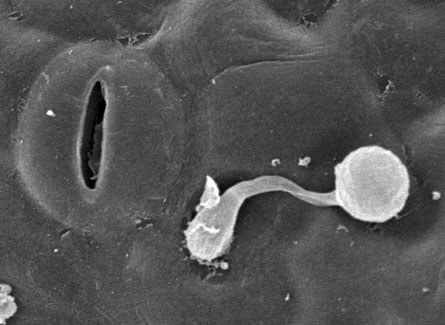Potato famine pathogen packs unusual, sneaky genome
Quick-changing zones may be key to the microbe’s vexing adaptability
No cheese, but there’s extra stuffing in a potato pathogen’s genome.


A supersized, unusual arrangement of DNA could help explain why the microbe that caused the Irish potato famine continues to overwhelm plants bred to resist it, says Sophien Kamoun of Sainsbury Laboratory in Norwich, England. He and 94 other researchers from around the world unveil the genome of Phytophthora infestans online September 9 in Nature.
This funguslike microbe causes a fatal crop disease called late blight in potatoes and tomatoes. In the 1840s, the blight began destroying Ireland’s mainstay potato crops, eventually leaving some million people to starve and driving others to migrate in history-making waves. Potatoes remain important worldwide, now the fourth largest food crop, and late blight continues to give farmers nightmares, destroying some $6.7 billion of harvest a year.
At about 240 megabases, the P. infestans genome dwarfs the 95-megabase genome of P. sojae, which attacks soybeans, and the 65-megabase genome of P. ramorum, which causes sudden oak death, the researchers report. But the late-blight pest doesn’t have extra genes compared with the other two.
Instead, regions of DNA packed tightly with genes alternate in the pest with long stretches of repetitive DNA (once thought to be a kind of “junk”) dotted with only a few genes, the team reports. Within these repetitive stretches lie most of the microbe’s effector genes, which encode proteins that help attack plants. Geneticists already know that long strings of repetitive DNA typically change readily, thus the researchers propose that these nimble regions in P. infestans may help the pathogen keep up in the arms race against plants and farmers.
“I’m a plant pathologist — I want to know the enemy,” Kamoun says. “This knowledge is really important in helping us know where to go in breeding resistance.”






